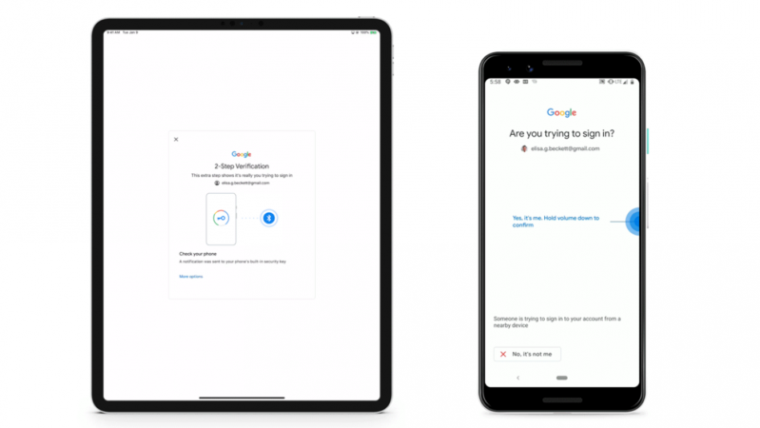Ill be passing on Googles new 2fa for logins on iPhones and iPads. Heres why Ars Technica

Google is increasing its new Android-based two-thing authentication (2fa) to humans logging in to Google and Google Cloud offerings on iPhones and iPads. While Google deserves props for looking to make stronger authentication to be had to greater customers, I’ll be averting it in desire of 2fa methods Google has had in area for years. I’ll explain why later. First, right here’s some historical past.
Google first introduced Android’s integrated safety key in April, while it went into beta, and once more in May, whilst it became generally available. The idea is to make devices going for walks Android 7 and up users’ number one 2fa device. When a person enters a valid password into a Google account, the cellphone shows a message alerting the account owner. Users then tap a "sure" button if the login is valid. If it is an unauthorized attempt, the consumer can block the login from going thru.
The machine ambitions to tighten account safety in a meaningful way. One of the key causes of account breaches is passwords that are compromised in phishing attacks or other forms of information thefts. Google has been a pacesetter on the subject of two-element protections that by way of definition require some thing further to a password for someone to gain get admission to to an account.
Among the strongest forms of 2fa to be had from Google are cryptographic safety keys that connect with a pc’s USB slot. These keys are based on requirements from the industry-huge FIDO alliance. They’re extremely dependable and honestly impossible to be phished. Later variations that used low-electricity Bluetooth or near-area conversation labored natively with Android gadgets but up to now were a nonstarter with iOS users, who complain the gadgets don't always work reliably.That has left Google scrambling for any other FIDO-sanctioned way for the masses to do 2fa. And that’s where Android integrated keys are available. Unfortunately, there are key drawbacks to this approach as properly. First, it is predicated on Bluetooth, and all its maddening glitches, for the cellphone to talk with the macOS, Windows 10, or Chrome OS tool the user is logging in to. Second, it also works handiest whilst human beings log in to an account using Google’s Chrome browser. Other browsers and apps are out of luck. Another shortcoming changed into that Android keys weren’t to be had to users logging in from an iOS device.
On Wednesday, Google is addressing this remaining disadvantage with a brand new approach that brings Android keys to iPhone and iPad users. It relies at the Google Smart Lock app going for walks at the iOS tool that communicates over Bluetooth with the integrated key stored at the user’s Android telephone or pill. (The app, which is also used to make FIDO-primarily based crypto keys paintings with iOS devices, has user ratings of just 2.2 out of five.) Google has extra commands here. Company representatives declined to provide interviews for this publish.
Thanks, but no thanks
I spent approximately 90 mins seeking to get the technique to paintings between an iPad mini and a Pixel XL. I had no hassle putting in Android’s built-in key and the use of it to authenticate logins from a macOS pc to both a private Google account and a work account provided by means of G Suite. Alas, I changed into never able to get the Android keys to work while logging in to either account on the iPad mini. It turned into a frustrating revel in, but as a minimum it was progress. Ars Reviews Editor Ron Amadeo told me he changed into not able to get even the Android piece to paintings when he attempted several weeks in the past.
I won’t rule out the opportunity that the failure is at the least in component the result of user blunders. But that’s now not the factor. If people from a tech web page struggle, so, too, will Aunt Mildred or Uncle Frank in Poughkeepsie. And given Bluetooth’s above-referred to quirks, it seems entirely possible that our incapacity to get Android’s integrated keys to paintings changed into the result of a failure of the gadgets to attach over this wi-fi channel.
And so long as we’re speaking approximately Bluetooth deficiencies, let’s now not overlook that Google recently warned that the Bluetooth Low Energy version of the Titan security key it sells for 2-component authentication can be hijacked by nearby attackers. The weakness doesn’t routinely mean Bluetooth is insecure, but it does suggest that the channel can be much less applicable for quite sensitive protection protocols than some engineers understand.so in the meanwhile, I haven't any plans to use Android keys while logging in to Google on my iOS gadgets. Instead, I’ll hold to apply Duo Mobile’s authenticator characteristic (Google Authenticator works nearly identically), as I actually have for a while now. This mechanism isn’t best. The one-time token numbers are quick-lived, however they are able to nevertheless be acquired by quick-moving attackers who input credentials into a actual Google account right away after a goal enters them in to a look-alike phishing website. That state of affairs may assist provide an explanation for how Iranian hackers these days controlled to bypass 2fa protections supplied by way of Yahoo Mail and Gmail.Another 2fa option for iOS customers is Google prompt, which has been to be had for more than a year. Unfortunately, that safety, too, may be abused by brief-performing phishers.
So thank you, Google, for trying so hard to convey smooth-to-use 2fa to extra customers. But I’ll bypass on this present day supplying till the enterprise gets this mess looked after out.
Let's block advertisements! (Why?)
//arstechnica.com/records-technology/2019/06/sick-be-passing-on-googles-new-2fa-for-logins-on-iphones-and-ipads-heres-why/
2019-06-12 17:58:00Z
52780312975457
0 Response to "Ill be passing on Googles new 2fa for logins on iPhones and iPads. Heres why Ars Technica"
Post a Comment